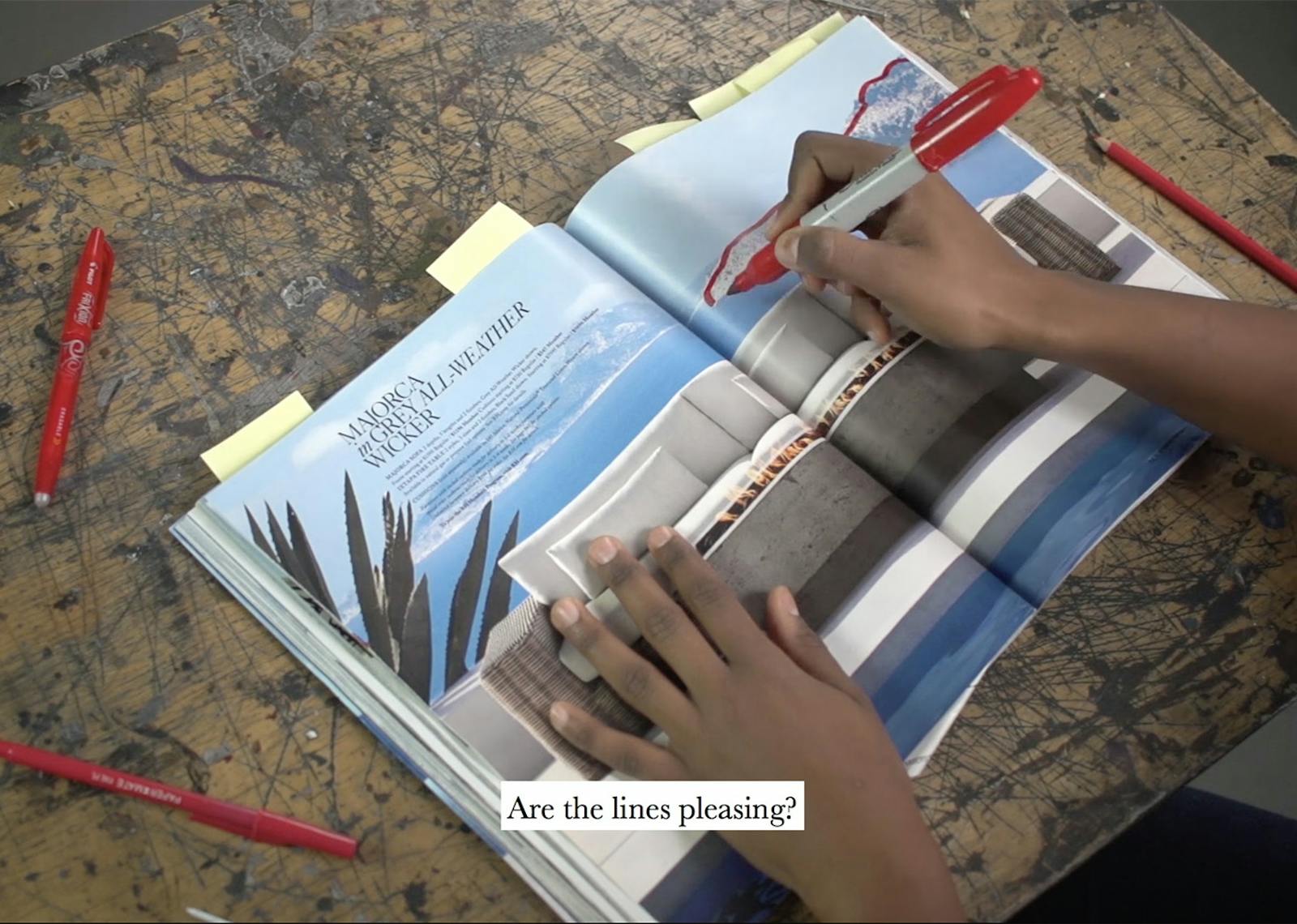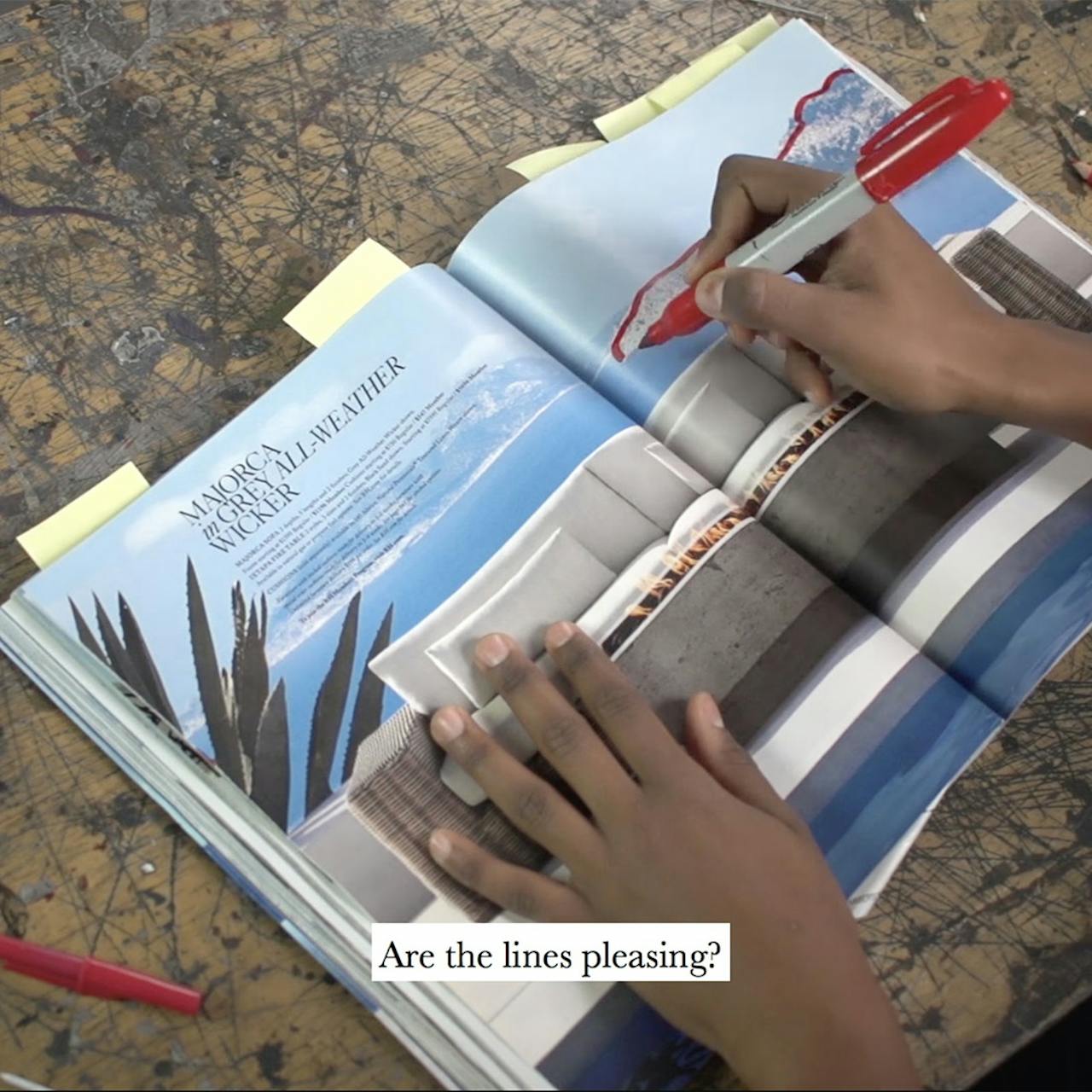Red Sourcebook
REPARATION HARDWARE


Ilana Harris-Babou
In 1936 the United States Federal Housing Administration put out an underwriting manual stating that “naturally or artificially established barriers” could be erected to keep out an “infiltration of...lower-class occupancy and inharmonious racial groups.” It even suggested using the landscape itself as a tool of segregation, noting that “hills and ravines” could be used to prevent “inharmonious encroachment.” This bureaucratic racism, along with various federal, state, and municipal housing policies, neighborhood restrictions, and codes relating to creditworthiness and mortgages, established a system of “redlining,” whereby desirable real estate was offered to white people while Black Americans and other so-called “adverse influences” were forcibly kept out.
Ilana Harris-Babou traces this racist legacy of land ownership by taking a Sharpie and quite literally redlining a Restoration Hardware Outdoor sourcebook. Flipping through the catalog, she divides up the idealized landscape used to sell outdoor living furnishings and finding parallels between the language of land stewardship and neighborhood planning in the FHA’s discriminatory manual and the design platitudes and sustainability double-speak of the RH brochure. These two books propose their versions of creating a “home”; Harris-Babou makes us consider what we want for our own—and why we want it in the first place.
